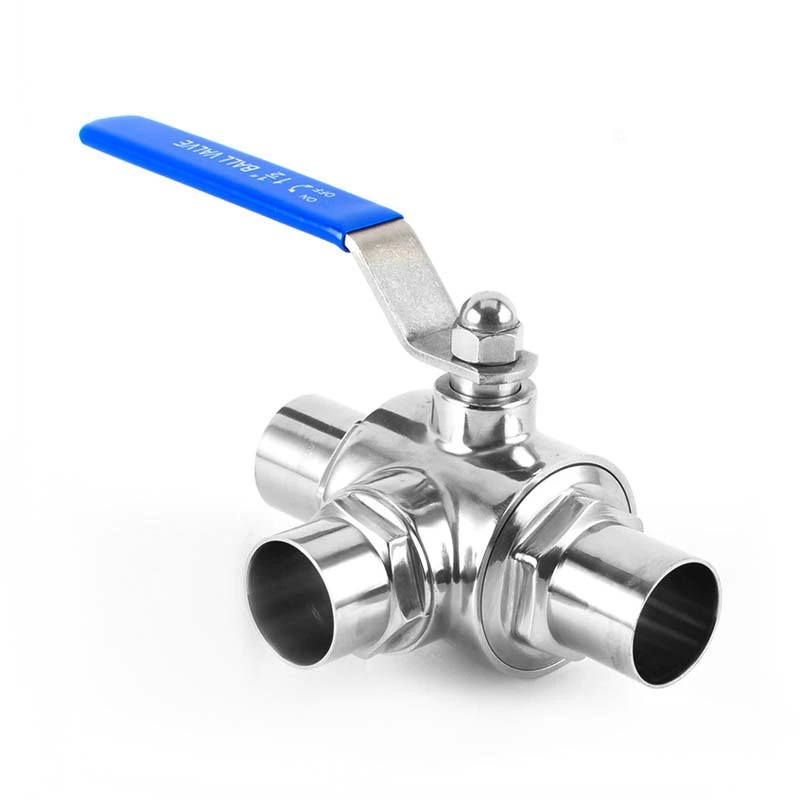Types And Illustrations Of Sanitary Valves
Sanitary Valve are the most common components we see on-site. Three-impulse control of drum liquid level and boiler combustion control all rely on valve opening and closing to control the object. The goal of our algorithms is to control valve opening and closing, thereby achieving automatic control. Valves have a wide range of uses, and therefore play a significant role. For example, in power plants, valves control the operation of boilers and steam turbines. In petroleum and chemical production, valves also play a crucial role in ensuring the proper operation of all production equipment and processes. Despite this, valves are often overlooked compared to other products. For example, when installing machinery and equipment, people often focus on key components such as compressors, high-pressure vessels, and boilers. This practice can reduce overall production efficiency, lead to production halts, or cause various other accidents. Therefore, it is necessary to understand and appreciate valves. Valves are classified by various types, and their definitions vary widely. Some are categorized by application (e.g., chemical, petroleum, power plants), by medium (e.g., steam, air valves), by material (e.g., cast iron, cast steel, forged steel), by connection type (e.g., internal thread, flanged valves), and by temperature (e.g., low-temperature, high-temperature).
Currently, valves are generally classified by pressure and structure. Specifically, valves are categorized by nominal pressure: ≤1.6 MPa are low-pressure valves; 2.5, 4.0, and 6.4 MPa are medium-pressure valves; ≥10 MPa are high-pressure valves; and over 100 MPa are ultra-high-pressure valves.
The main structural categories include:
Plug valves, gate valves, globe valves, and ball valves—used to open or close the flow of media in pipelines.
Check valves (including foot valves)—used to automatically prevent backflow of media in pipelines.
Throttle valves—used to regulate the flow of media in pipelines. Butterfly valves—Used to open or close the flow of media within pipelines. They can also be used for regulating.
Safety valves—Used in boilers, containers, equipment, and pipelines, they automatically remove excess media pressure when the media pressure exceeds a specified value, ensuring safe production operations.
Pressure reducing valves—Used to automatically reduce media pressure within pipelines and equipment. This system creates resistance as the media passes through the gap between the discs, resulting in pressure loss and pressure reduction.
Steam traps—Used to automatically remove condensate from steam pipelines to prevent steam loss or leakage.
Classification by purpose and function
Shut-off valves—Mainly used to shut off or connect media flow. These include gate valves, stop valves, diaphragm valves, ball valves, plug valves, butterfly valves, plunger valves, ball plug valves, and needle-type instrument valves.
Regulating valves—Mainly used to regulate the flow rate and pressure of media. These include regulating valves, throttling valves, and pressure reducing valves.
Check valves—Used to prevent backflow of media. These include check valves of various structures. Diverter valves—used to separate, distribute, or mix media. They include distribution valves and steam traps of various structures.
Safety valves—used to protect against overpressure. They include various types of safety valves.
Classification by pressure:
Vacuum valves—valves with operating pressures below standard atmospheric pressure.
Low-pressure valves—valves with a nominal pressure (PN) less than 1.6 MPa.
Medium-pressure valves—valves with a nominal pressure (PN) between 2.5 and 6.4 MPa.
High-pressure valves—valves with a nominal pressure (PN) between 10.0 and 80.0 MPa.
Ultra-high-pressure valves—valves with a nominal pressure (PN) greater than 100 MPa.
Classification by media temperature:
High-temperature valves—valves with a t greater than 450°C.
Medium-temperature valves—valves with a t between 120°C and 450°C.
Normal-temperature valves—valves with a t between -40°C and 120°C. Low-temperature valves—valves with a temperature range of less than -100°C and a t value less than -40°C.
Ultra-low-temperature valves—valves with a t value less than -100°C.
Classification by valve body material
Non-metallic valves—such as ceramic valves, fiberglass valves, and plastic valves.
Metal valves—such as copper alloy valves, aluminum alloy valves, lead alloy valves, titanium alloy valves, monel valves,
cast iron valves, carbon steel valves, cast steel valves, low-alloy steel valves, and high-alloy steel valves.
Metal-lined valves—such as lead-lined valves, plastic-lined valves, and enamel-lined valves.
General classification method
This classification method is based on principle, function, and structure and is currently the most commonly used classification method both internationally and domestically. It is generally divided into:
Gate valves, globe valves, throttle valves, instrument valves, plunger valves, diaphragm valves, plug valves, ball valves, butterfly valves, check valves, pressure reducing valves,
Safety valves, steam traps, regulating valves, foot valves, filters, and drain valves.
